Rooibos is a shrub that grows in a very narrow corridor north of Cape Town in the fertile soil of the Cederberg Mountains. Growers there produce about 20,000 metric tons annually to make a healthful, refreshing, non-caffeinated herbal beverage known locally as red bush tea. Rooibos and the region where it is grown were recently awarded Protected Designation of Origin (PDO) status by the European Union. The traditional process used to make rooibos was also protected.
Powered by RedCircle
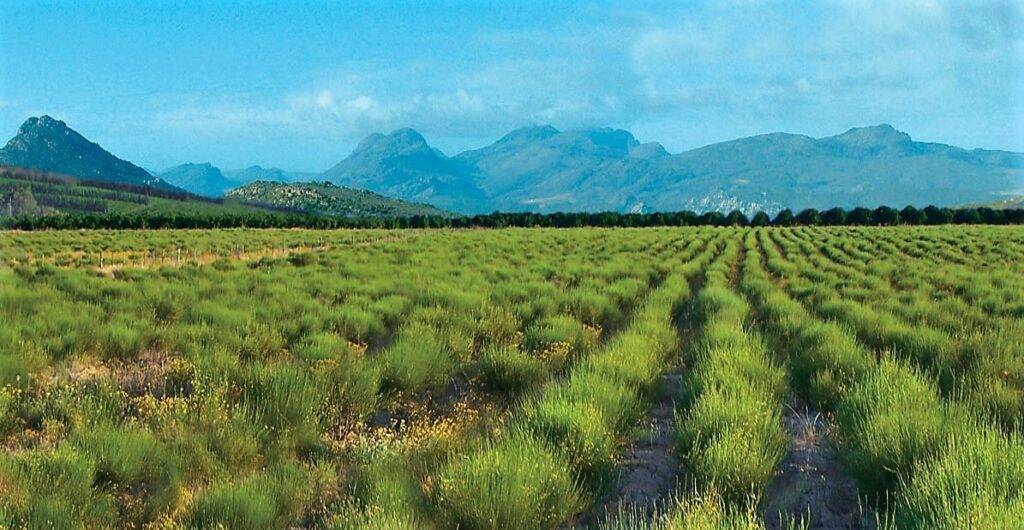
Listen to the interview
Mientjie Mouton, founder and managing director of South Africa’s Carmién Rooibos Tea, a supplier of quality rooibos, explains the significance of the protected status afforded this widely consumed beverage and how rooibos has rebounded from a devastating drought.
Dan Bolton – Will you tell our listeners why the EU’s decision is good news and how you see the European Union’s seal of authenticity advancing the overall consumption of rooibos worldwide?
Mientjie Mouton – We are very excited about this. It’s a process that was started about ten years ago. Everyone now knows that rooibos tea is really something special and that some key points differentiate the product from all the other herbal teas. The rooibos tea certification means the product must be cultivated and produced in this region. Processing also has to take place in that region.
The region sees very cold winters and hot summers, which helps create the special taste and flavor of rooibos tea.
Rooibos is a natural product only grown in 15 areas in the Western Cape and the Northern Cape of South Africa.
Carmién Rooibos Tea is based in the Western Cape. We buy tea for processing from all the different areas, including the Northern Cape and southwest locations. When buying rooibos tea from Carmién Tea, we can guarantee that you will get true, honest, and purely natural products from these locations.
Dan – About half of the rooibos produced is consumed locally, and the rest is exported to 60 countries, mainly in Europe, where Germany (28%) is the leading market. Japan consumes about 22% of rooibos exports. Following several years of strong growth, a four-year drought in 2015 curtailed market expansion. The rains have since returned, and the perished bushes have been replanted, some with drought-resistant cultivars. Mientjie, you mentioned that shifting temperature and rainfall patterns have actually expanded growing areas.
Mientjie – Drier conditions apply globally, specifically in South Africa and the Western and Northern Cape. The production area for rooibos tea has moved slightly towards the southwestern parts and away from the northern parts. Our average rainfall is around 300 millimeters per year came down to below 100 mm of rain during the severe drought. Over the last two years that rainfall has picked up, but it’s still below average. So in general, we see a trend towards drier conditions. Luckily for South Africa, we have areas that used to be too wet to grow rooibos tea, which has become perfect and suitable for growing good quality rooibos.
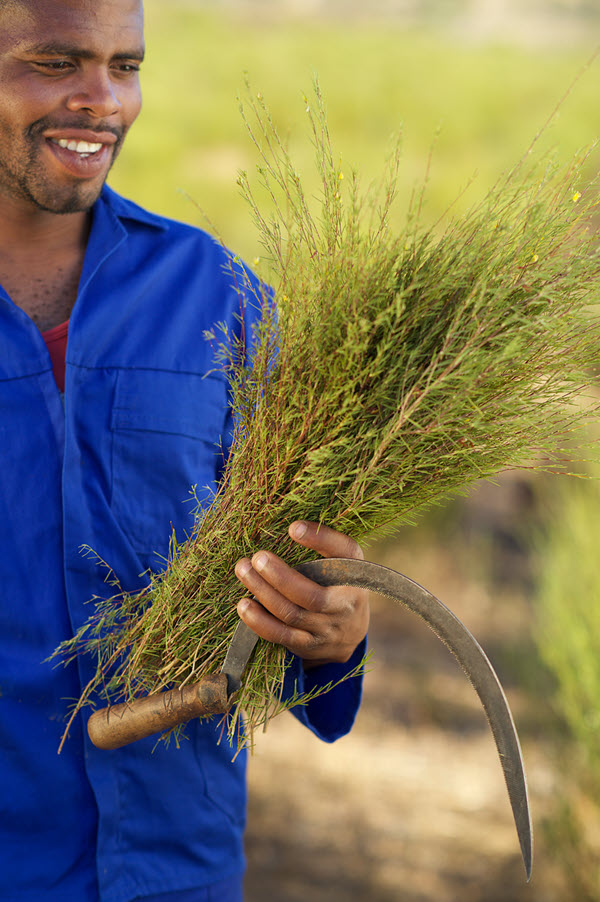

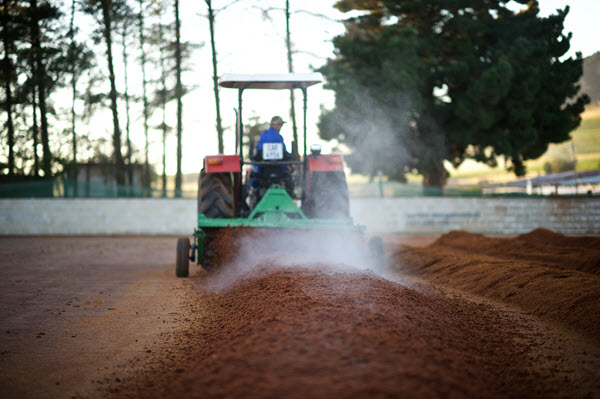
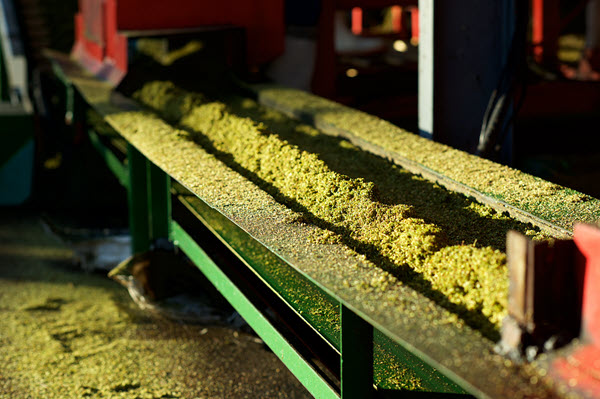
Dan – The EU’s Geographical Indication (GI) requires strict compliance with traditional processing methods and prohibits third parties from using phrases like “rooibos style,” “red bush type tea,” or “imitation red bush” on labels and promotions.
Mientjie – This is actually a stricter GI certification that has been approved for rooibos tea. It specifies only 15 regions within the Western and Northern Cape of South Africa where Rooibos can be grown and be called rooibos tea. Rooibos undergoes an oxidation process where the antioxidants in the tea and the natural plant phenolic activities in the tea give you a very specific characteristic smell and taste, which is a more fruity, sweet flavor. That is one of the most identifiable properties of rooibos tea. The tea has a slightly sweet caramel taste and flavor and is not as stringent as black tea or other herbal teas. It has a very nice, smooth, full flavor and aroma. All that has to do with the special oxidation process where the temperature can increase to about 40 degrees Celsius. That happens overnight after the tea has been cut. Once it’s gone through that process, we have a nice red infusion in the cup. “Rooi” in Afrikaans is the color red in English; that is where the name comes from.
When it does not go through that process, we have green rooibos tea, which is the unfermented variant of our rooibos. Green rooibos is very popular nowadays, and we are very excited about it because the health properties are even greater in green rooibos than red.
“All Carmién Rooibos Tea products will now carry the PDO logo ensuring buyers that they are purchasing rooibos sourced from the above-mentioned areas and authentically produced.”
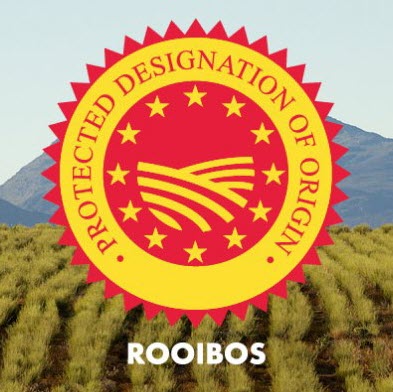
Dan – During the ongoing pandemic, there’s been a significant increase in consumption and interest in the health qualities of herbal infusions. Will you describe some of the health advantages of rooibos.
Mientjie – Rooibos tea is naturally caffeine-free. That is one of the biggest health benefits. Every batch of tea that we process is graded for the quality of that specific cup when it comes to specific antioxidant values. These antioxidants benefit and support your immune system and helps you to stay hydrated. We all know that is the baseline of keeping healthy. What we’ve seen is that minerals like zinc, magnesium, and calcium have become exceedingly important in times like these. It is about a well-balanced, healthy body that you have to maintain in order to prevent contracting viruses.
To keep a healthy body, and healthy lifestyle, we like to say that you need to drink 10 cups of rooibos tea a day. Research indicated six cups of rooibos/day provides important benefits but even two cups will suffice.
So you’re gonna have to drink your rooibos daily in order to keep healthy.
Dan – Customers looking for convenience will find rooibos available in both an iced format (bottled and canned), or brewed hot then chilled over ice, as well as cold brewed. Will you talk briefly about cold brew formulations since they are growing in popularity.
Mientjie – You can brew rooibos for as long as you like and it will not become bitter, it just increases the sweetness and antioxidant value. The cold brew option as a way of preparation is very interesting to us. Just put the tea bag in cold water, let it steep overnight and you get a very smooth flavor profile.

If you use a high-quality tea you will get the rich flavor and fullness in your cup. The health properties, antioxidant levels, and minerals available in that cup are exactly the same. Processed rooibos is steam sterilized and has a very low total microbial count, making rooibos a very safe tea to use as a cold brew. As for convenience, you can keep it in the fridge, let it brew overnight, and have it eady for the office or children’s food boxes, the next day, or simply for in-home consumption. It’s very healthy and very safe.

Carmién Rooibos Tea
The company was founded in 1998 in an old farm shop in Citrusdal, South Africa, at the foothills of the Western Cape’s Cederberg Mountains. Founder and Managing Director Mientjie Mouton grew up on a rooibos farm in the same valley before moving to the Brakfontein Estate where rooibos was also produced. Carmién sources from several growers and supplies Costco Japan, Taiwan, and several private-label and bulk clients globally. In North America QTrade Teas & Herbs has been the exclusive distributor of Carmién organic rooibos for the past 20 years.
Rooibos is native to South Africa and has been consumed by the Khoisan for more than 300 years. It has been grown commercially for over a century and now accounts for most of South Africa’s tea exports (South Africa also produces a small quantity of black tea). Initially regulated, in 1993 the South African government permitted commercial production that boosted exports. Plantings in the prime growing areas of Citrusdal, Piekenierskloof, Nieuwoudtville, Wupperthal, Clanwilliam, Redelinghuys, and Gifberg expanded and dry yields rose to about 300 kg per hectare using modern harvesting techniques. In 2007 rooibos generated $10 million annually (ZAR155 million) a total that doubled by 2015 when a severe drought depressed yields that fell to less than 10,000 metric tons. In 2019 South Africa exported 7,693 metric tons. The domestic market consumed 7,000 metric tons. According to the Rooibos Council fact sheet, there are 11 commercial processors and approximately 300 commercial farms employing 8,000 farm laborers. The annual harvest begins in late January through February.
– Dan Bolton
Share this post with your colleagues
Sign up to receive Tea Biz weekly in your inbox.


